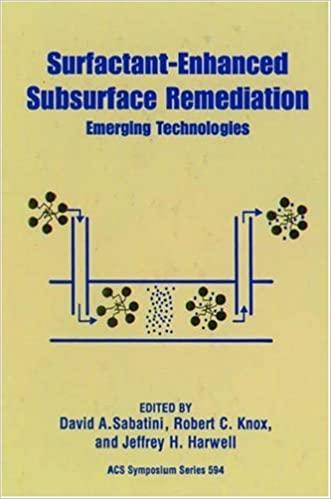Answered step by step
Verified Expert Solution
Question
1 Approved Answer
Question 1 A 4 m long and 1 m wide container is completely filled with ethanol. The flow rate of air flowing over the

Question 1 A 4 m long and 1 m wide container is completely filled with ethanol. The flow rate of air flowing over the container is 10 m/s. The temperature of the ethanol in the air and in the container is 25C. The saturated vapor pressure of ethanol at 25C is 0.059 atm and the liquid density (Rethanol) is 789 kg/m. What is the average mass transfer coefficient? What is the steady rate of ethanol loss due to evaporation from the surface? Note: Consider the bulk concentration ethanol in the air as zero! Information: Dethanol-air (25C) = 1.347x10-5 m/s ; R = 0.082 For air at 25C = (u/p) = 15.54x10-6 m/s L.atm mol.K = Methanol 46 g/mol Question 2: A plane wall, with a surface area of 10 m and a thickness of 60 cm, exposed to air at 20C. The other surface of the plane wall is exposed to a heat 3200 W. The average heat transfer coefficient at the cold surface of the wall is equal to 16 W/m.K. Under steady-state conditions, calculate the heat flux and the temperature at the cold surface of the wall. Question 3: A CO2 bubble is rising in a glass of mineral water 20 cm tall. Estimate the time required for a bubble of 5 mm in diameter to reach the top if the properties of CO2 and mineral water can be taken as equal to that of air and water, respectively. The temperature of the mineral water and CO2 is 12C. kg 1225x10-6 ; p = 999 kg/m Information: For water at 12C For air at 12C = 17.79x10-6 m.s kg m.s p = 1.2385 kg/m g (gravitational acceleration) =9.8 m/s
Step by Step Solution
There are 3 Steps involved in it
Step: 1

Get Instant Access to Expert-Tailored Solutions
See step-by-step solutions with expert insights and AI powered tools for academic success
Step: 2

Step: 3

Ace Your Homework with AI
Get the answers you need in no time with our AI-driven, step-by-step assistance
Get Started


